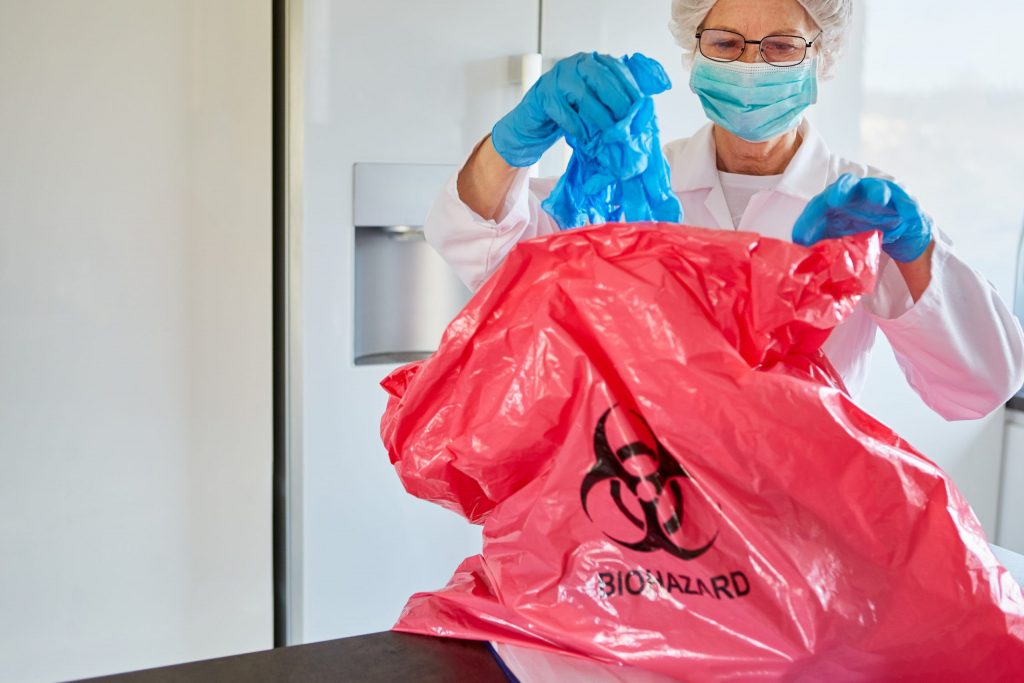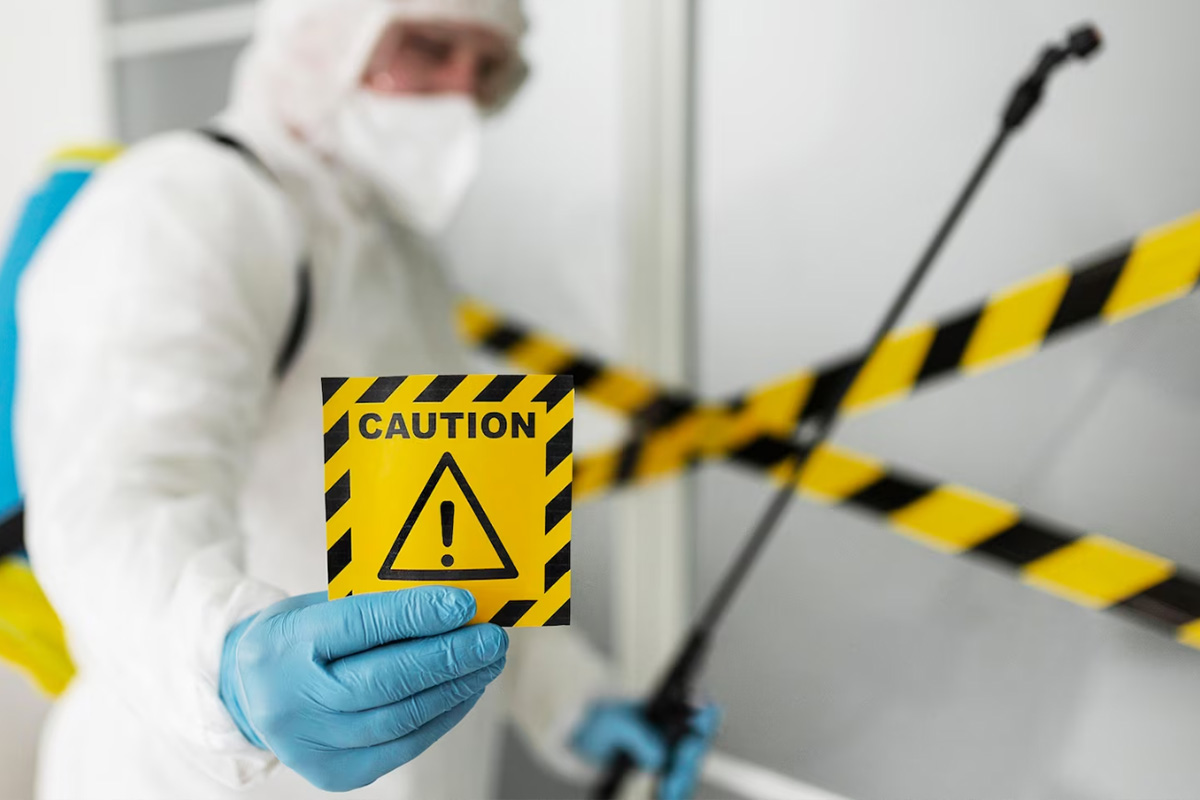Clandestine Lab Cleanup: Comprehensive Decontamination for Hazardous Sites
Clandestine Lab Cleanup: Comprehensive Decontamination for Hazardous Sites
Blog Article
Expert Biohazard Cleaning and Decontamination for Blood, Bodily Fluids, and Hazardous Materials
The potential health threats associated with exposure to biohazards emphasize the essential need for meticulous handling and comprehensive clean-up. As we browse the detailed landscape of biohazard cleanup, understanding the nuances of guidelines, conformity, and the specialized tools at play becomes crucial in making certain a safe and complete purification procedure.
Health And Wellness Threats of Biohazard Direct Exposure
Direct exposure to biohazards presents substantial health and wellness threats that can lead to serious effects for areas and people alike. Biohazards include a broad variety of organic materials, including blood, physical liquids, mold and mildew, germs, infections, and various other possibly infectious materials. When individuals enter into contact with these biohazards, whether via accidents, improper handling, or environmental exposure, they deal with the risk of contracting severe illnesses or conditions.
One of the primary wellness threats connected with biohazard exposure is the transmission of infectious diseases. Bloodborne virus such as HIV, hepatitis B and C, and different bacteria can be present in biohazardous products, positioning a direct threat to human wellness. Inhaling airborne biohazards like mold and mildew spores or coming into call with polluted surfaces can additionally lead to respiratory concerns, allergies, and various other adverse wellness impacts.
Moreover, biohazard exposure can have long-lasting wellness implications, with some conditions materializing years after the preliminary call (Blood Cleanup). As a result, it is vital to prioritize proper biohazard cleaning and decontamination to mitigate these health threats and ensure the safety and security of neighborhoods and people

Specialized Training for Biohazard Cleanup
When it comes to managing biohazard clean-up effectively and securely, specialized training plays an essential function in guaranteeing proper decontamination procedures are complied with. Biohazard cleanup requires details understanding and skills to efficiently alleviate risks linked with bloodborne pathogens, bodily fluids, and harmful products. Experts educated in biohazard clean-up go through rigorous guideline on just how to securely handle, remove, and deal with biohazardous products to stop contamination and direct exposure.
Specialized training for biohazard clean-up covers a variety of vital subjects, including correct personal protective tools (PPE) usage, bloodborne pathogen awareness, purification strategies, and contaminated materials disposal methods. Individuals educated in biohazard cleaning are outfitted with the needed competence to evaluate contamination degrees, identify prospective risks, and execute suitable clean-up procedures in compliance with regulative criteria.
Constant training and education and learning are paramount in the area of biohazard clean-up to remain upgraded on the most recent purification modern technologies, safety and security protocols, and policies. By purchasing specialized training, biohazard cleanup specialists can properly reply to emergency clean-up situations and guard both public wellness and the setting.
Significance of Appropriate Decontamination Strategies
Making use of correct decontamination strategies is vital in biohazard cleaning to effectively eliminate hazardous materials and lessen health risks. Efficient purification not just ensures the elimination of visible traces of blood, physical fluids, and various other biohazards however also targets unnoticeable pathogens that may position serious health threats otherwise correctly eradicated. By complying with stringent purification procedures, educated professionals can considerably reduce the threat of exposure to harmful microorganisms, infections, and bacteria that might bring about conditions or infections.
Appropriate decontamination methods involve using specific devices and anti-bacterials that are especially developed to reduce the you could check here effects of biohazards efficiently. Thorough cleaning and sanitation of contaminated areas are vital to avoid the spread of virus and ensure a secure environment for residents. Furthermore, the appropriate disposal of biohazardous waste following decontamination procedures is vital in stopping contamination of various other look at this site surface areas or individuals.

Tools and Devices for Safe Cleanup
When dealing with blood, bodily liquids, or harmful materials, biohazard cleaning experts count on specialized equipment to reduce direct exposure threats and thoroughly sanitize the damaged area. Furthermore, biohazard cleaning kits consisting of disinfectants, absorbent materials, and biohazard bags are used to securely contain and get rid of of infected products.
Advanced cleansing tools like hospital-grade disinfectants, HEPA-filtered vacuums, and fogging devices are employed to sterilize surface areas and eliminate biohazards successfully. Specialized tools such as sharps containers and biohazard waste disposal bins are made use of to safely handle sharp items and biohazardous waste products. By making use of the best equipment and tools, biohazard cleaning specialists can guarantee an extensive clean-up procedure that focuses on safety and lessens health and wellness dangers for both workers and occupants of the damaged space.
Rules and Conformity in Biohazard Cleaning
Correct adherence to laws and compliance standards is critical in biohazard cleansing to ensure the safety of both employees and the environment. Government agencies such as OSHA (Occupational Safety and Wellness Management) and the EPA (Epa) have developed particular standards for biohazard cleanup treatments to minimize wellness threats and ecological contamination. These guidelines cover a series of facets consisting of the handling, transportation, and disposal of biohazardous materials, in addition to the essential training and protective tools required for personnel associated with the cleanup process.
Biohazard cleansing companies should stay current with these laws to ensure that their operations meet the needed safety requirements. Failure to adhere to these policies can lead to severe consequences, consisting of fines, lawsuit, and endangering the health of people and the environment. By following rigid regulations and conformity actions, biohazard cleansing business can successfully minimize dangers and make certain a extensive and safe cleanup procedure for all events entailed.
Final Thought
In final thought, biohazard cleansing and purification need specialized training, proper techniques, and adherence to guidelines. Direct exposure to blood, bodily liquids, and unsafe products positions considerable health and wellness risks, making it vital to use the ideal tools and tools for safe cleanup. By adhering to strict procedures and standards, specialists can successfully mitigate the dangers associated with biohazard direct exposure and make sure the security of both themselves and others.
As we navigate the elaborate landscape of biohazard clean-up, understanding the subtleties page of laws, conformity, and the customized tools at play comes to be critical in ensuring a complete and secure purification process. (Blood Cleanup)
When it comes to managing biohazard clean-up efficiently and safely, specialized training plays a fundamental role in ensuring appropriate purification treatments are followed.Using correct decontamination strategies is important in biohazard cleanup to properly minimize and remove harmful materials health and wellness risks. Additionally, biohazard cleaning kits including anti-bacterials, absorptive products, and biohazard bags are made use of to safely consist of and get rid of of infected things.
Federal government agencies such as OSHA (Occupational Security and Wellness Management) and the EPA (Environmental Security Agency) have developed specific standards for biohazard cleaning procedures to lessen health and wellness dangers and environmental contamination.
Report this page